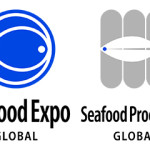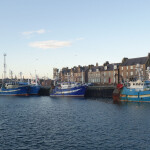Seafood is becoming more sustainable, according to a report the Monterey Bay Aquarium released on Tuesday, the 10th anniversary of its Seafood Watch sustainable seafood program and the 25th anniversary of the aquarium.
“State of Seafood: Turning the Tide” details the progress made over the past several years in protecting ocean ecosystems, better managing fisheries and fish farms, and advancing the sustainable seafood movement.
“New initiatives by consumers, businesses and fishermen are gaining momentum, too,” said Julie Packard, the aquarium’s executive director, in the report’s introduction. “Market forces are driving demand for seafood from sustainable sources. Now more than ever, consumers are asking for seafood that is both good for their health and for the oceans. Fishing communities and conservationists are crafting innovative solutions to ensure that there will be fish to catch — and people to catch them — for generations to come.”
The report will be updated biennially, serving as a benchmark for the sustainable seafood movement.
“We know what we need to do,” added Packard, “and the key players are working more closely than ever to do what needs to be done.”
In conjunction with the report’s release, the aquarium has launched a national campaign, dubbed “Save Our Seafood,” urging chefs to pledge not to serve species on the Seafood Watch seafood-buying guide’s list of species to avoid. More than two dozen chefs have already joined the campaign, including Alton Brown of Be Square Productions, Rick Bayless of Frontera Grill and Topolobampo, Susan Spicer of Bayona, Rick Moonen of rm seafood and Fedele Bauccio of Bon Appétit Management Co.
The aquarium has distributed nearly 32 million pocket-sized guides over the past 10 years.
The report includes a list of “Super Green” species that the aquarium says are both healthy and produced in an environmentally friendly manner: troll or pole-caught albacore tuna from the United States or British Columbia, farmed mussels, farmed oysters, Pacific sardines, Oregon pink shrimp, Alaska salmon, British Columbia spot prawns and farmed rainbow trout.
The list was developed in collaboration with the Harvard School of Public Health and Environmental Defense Fund. The species are required to meet three criteria: contaminant levels of less than 216 parts per billion of methylmercury and 11 ppb of PCBs; omega-3 levels of at least 250 milligrams per day; and listed as a “best choice” in the Seafood Watch guide.
The report also includes a list of “top North American sustainable seafood companies” that have developed sustainable seafood purchasing policies. The report highlighted the companies that are working with members of the Conservation Alliance for Seafood Solutions, which includes the aquarium: Wal-Mart, Ahold USA, Giant Eagle, Sysco Corp., Compass Group, Aramark and Sodexo Alliance.
“State of Seafood” will be officially unveiled during a press event in Los Angeles on Tuesday.





